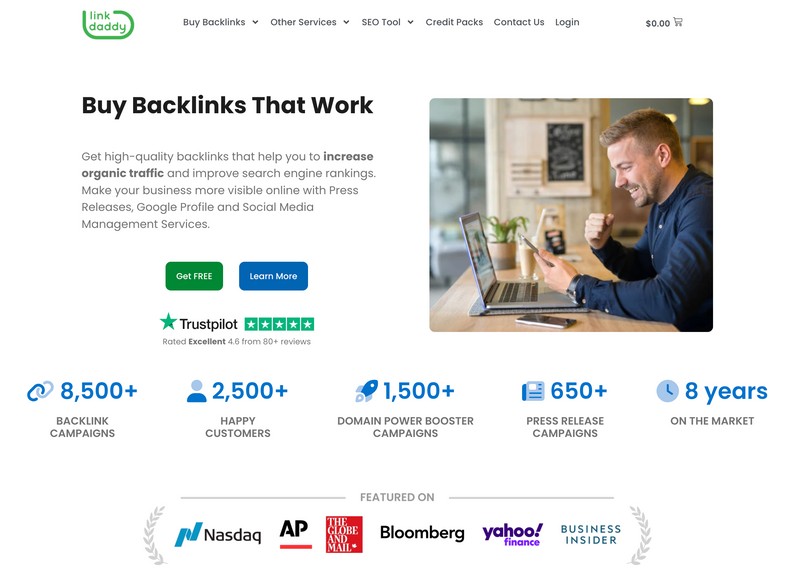Discover LinkDaddy Cloud Services: Solutions for Your Organization Requirements
Wiki Article
Comprehending the Various Kinds Of Cloud Providers and Their Usages
In today's electronic landscape, the world of cloud computer offers a varied array of solutions that accommodate the needs of people and services alike. From Infrastructure as a Solution (IaaS) to Software Program as a Service (SaaS), each kind of cloud service offers an one-of-a-kind objective and offers distinctive benefits. Comprehending the differences in between these various cloud designs is essential for maximizing operations, improving scalability, and guaranteeing cost-efficiency in a progressively interconnected globe. By checking out the nuanced functionalities and applications of each cloud solution, one can browse the intricacies of cloud computer with precision and insight.Infrastructure as a Solution (IaaS)
Framework as a Solution (IaaS) offers customers with virtualized computer sources over the net on a pay-as-you-go basis. This cloud computing version supplies essential IT infrastructure such as digital equipments, storage, and networking without the requirement for companies to buy and take care of physical web servers and data centers. With IaaS, users can scale resources up or down based on their demands, supplying flexibility and cost-efficiency.One of the key advantages of IaaS is its capability to rapidly stipulation and deploy framework components, allowing businesses to respond promptly to altering needs and market conditions. By contracting out facilities monitoring to the provider, organizations can focus much more on their core business activities as opposed to managing the intricacies of hardware maintenance and upgrades.
Furthermore, IaaS provides a high degree of reliability and protection, with providers normally providing robust information backup, calamity recuperation, and cybersecurity actions. This aids make sure that crucial business operations remain nonstop and information continues to be secured against potential risks. Cloud Services. Overall, Framework as a Solution simplifies IT procedures, enhances scalability, and reduces capital investment for businesses of all sizes
System as a Solution (PaaS)
Building upon the structure of Facilities as a Service (IaaS), System as a Service (PaaS) supplies an extensive atmosphere for programmers to create, release, and manage applications without the intricacies of underlying facilities administration. PaaS offers a platform with tools and services that simplify the growth procedure, enabling programmers to focus on writing code and structure applications instead of dealing with infrastructure concerns.

Software as a Service (SaaS)
Software as a Solution (SaaS) changes the method businesses access and utilize software applications by using them on a registration basis via cloud carriers. This cloud computing design removes the need for organizations to maintain and install software on specific tools, as everything is organized and handled centrally in the cloud.SaaS gives an affordable solution for services as they only spend for the software they use without the added expenses of equipment maintenance or software updates. It also supplies scalability, allowing companies to quickly change their software demands based on their demands.
Additionally, SaaS applications can be accessed from any kind of gadget with an internet connection, advertising collaboration and versatility among remote teams. Safety and security is a top priority in SaaS, with companies carrying out durable procedures to safeguard information kept in the cloud.
Popular examples of SaaS consist of client relationship monitoring (CRM) software program like Salesforce, productivity tools like Microsoft Office 365, and cooperation systems like Google Work area. SaaS proceeds to get grip in the business globe due to its ease, scalability, and cost-efficiency.
Feature as a Solution (FaaS)
With the development of cloud solutions like Software as a Service (SaaS) enhancing software delivery, Feature as a Solution (FaaS) stands for a standard shift in how code is carried out in a serverless setting. FaaS allows programmers to write and perform specific functions or items of code in feedback to details occasions without the need to manage the infrastructure. This serverless computing design makes it possible for developers to focus entirely on writing code to carry out details capabilities, without worrying themselves with the underlying facilities or web server administration.One of the crucial benefits of FaaS is its ability to range automatically based on the inbound workload. Features are executed in stateless containers that are rotated up and down as required, ensuring optimum source usage and cost-effectiveness. FaaS is especially beneficial for event-driven and microservices styles, where code execution is activated by events such as HTTP demands or database updates. By extracting the framework layer, FaaS simplifies growth, speeds up time to market, and enhances total agility in deploying cloud-native applications.
Storage as a Solution (STaaS)
A fundamental part in cloud computing, see page Storage as a Service (STaaS) offers individuals with a scalable and efficient option for managing information storage requirements. STaaS enables companies to keep and recover data from remote servers through the web, removing the requirement for on-premises equipment. This solution uses adaptability by enabling individuals to pay just for the storage space they make use of, making it an economical service for companies of all sizes.
STaaS is specifically useful for businesses with fluctuating storage space needs, as it provides a safe and secure and dependable storage remedy without the demand for considerable ahead of time financial investments. By leveraging STaaS, companies can streamline their data monitoring procedures, improve access, and improve information protection in a cost-effective manner.

Verdict
Finally, understanding the various sorts of cloud services and their usages is important for people and companies wanting to leverage the advantages of cloud computing. Each kind of cloud service supplies distinct benefits and capabilities, accommodating certain demands and requirements. By using the appropriate cloud service, organizations can boost their efficiency, scalability, and versatility in handling their IT infrastructure and applications. It is necessary to assess the particular requirements and objectives prior to selecting the suitable cloud service for ideal efficiency.From Infrastructure as a Service (IaaS) to Software as a Service visit the site (SaaS), each kind of cloud solution offers an one-of-a-kind objective and gives distinctive benefits. Cloud Services. By exploring the nuanced functionalities and applications of each cloud service, one can browse the intricacies of cloud computer with precision and foresight
With the evolution of cloud solutions like Software program as a Solution (SaaS) enhancing software application delivery, Function as a Solution (FaaS) stands for a paradigm shift in how code is executed in a serverless setting.In final thought, comprehending the different kinds of cloud solutions and their uses is important for businesses and people looking to leverage the advantages of cloud computer. By using the right cloud solution, organizations can enhance their performance, scalability, and adaptability in managing their IT framework and applications.
Report this wiki page